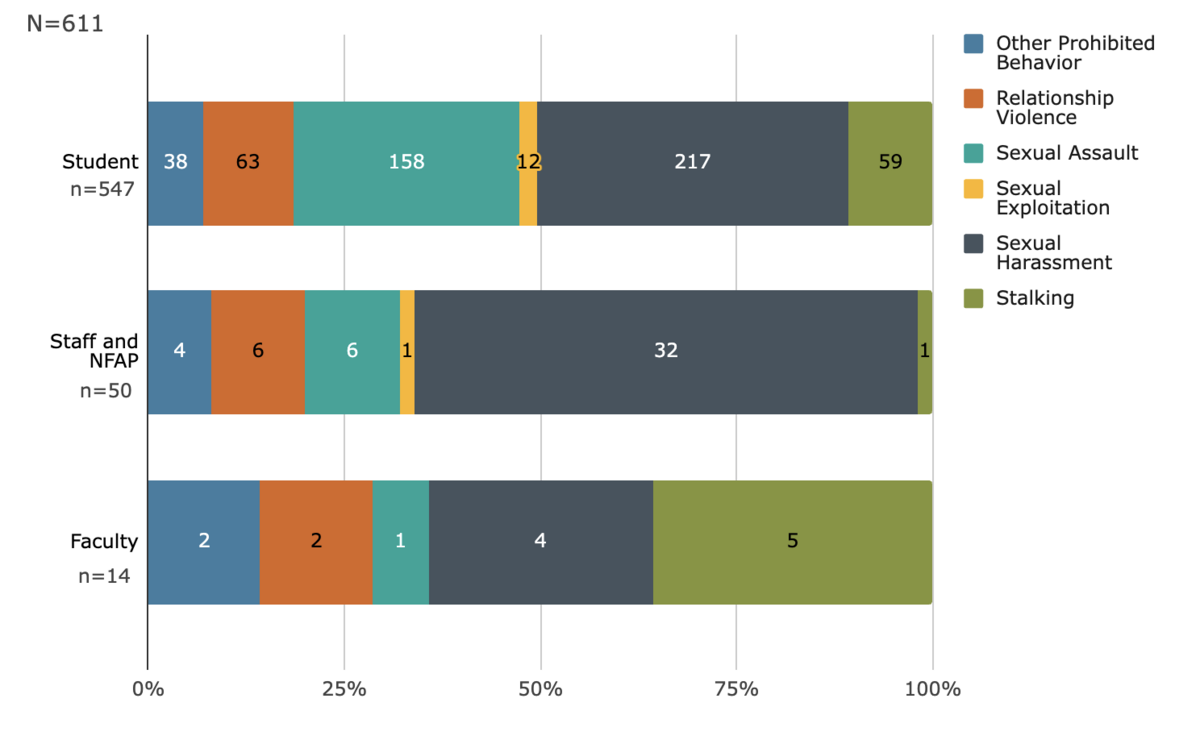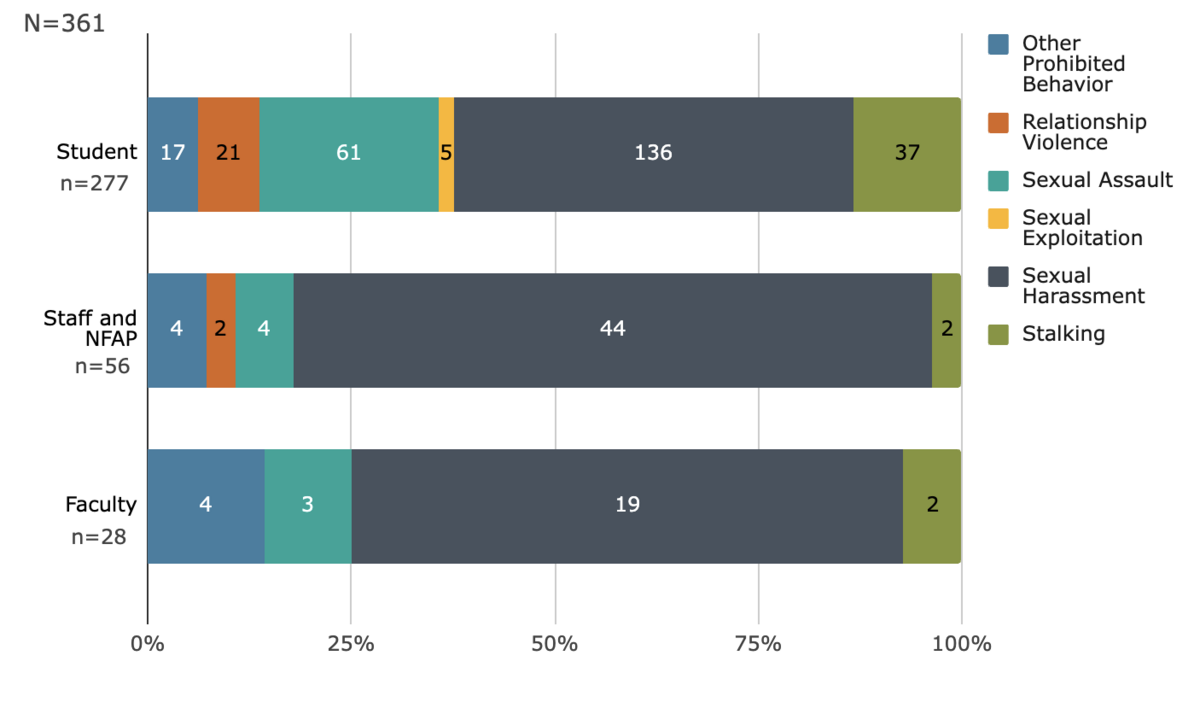In many instances, OPHD does not receive enough information, in a given report, to determine whether a complainant or respondent is affiliated with UC Berkeley and further, if they are a student, staff, or faculty member. However, the cases in which affiliation is known can provide insight into the SVSH harm affecting campus communities. Figure 11 shows that sexual harassment was the one of the most commonly alleged form of harm for student, staff, and faculty complainants, and that the number of sexual assault allegations were much higher for student complainants than for the two employee groups. Stalking made up a larger proportion of allegations with faculty complainants than it did for students and staff (Figure 11).

Figure 11: The types of SVSH allegations by complainant (impacted party) affiliation
As shown in Figure 12, staff constituted 8.2% of the total complainants in SVSH cases but 15.5% of respondents. Likewise, faculty constituted 2.3% of SVSH case complainants in 2022-23, but 7.8% of respondents. Conversely, students made up 89% of complainants and 76.7% of respondents. This asymmetry may well reflect the power dynamic that is inherent in, and potentially magnifies the impact of, many instances of alleged SVSH. That said, the student numbers clearly show that peer-on-peer violence is also a common dynamic to which prevention and response efforts must be attuned.

Figure 12: The types of SVSH allegations by respondent affiliation